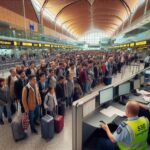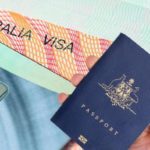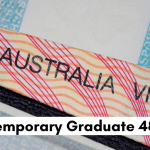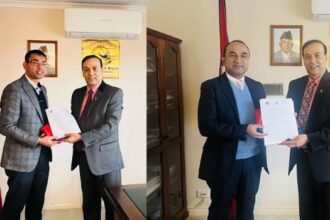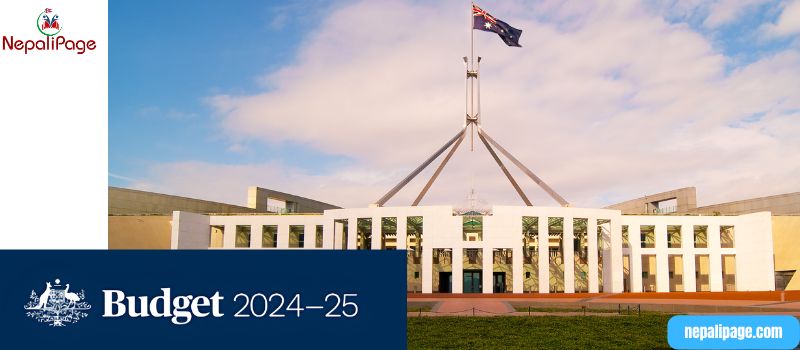The biggest contributors to the forecast net-overseas migration in 2022-23 were 270,000 international students, which was 170,000 more than in 2018-19.
Michelle Grattan, University of Canberra
Australia’s net-overseas migration levels will be cut dramatically over two years to bring the country’s exploding intake back to sustainable numbers.
In estimates to be released on Monday, net-overseas migration will be 375,000 this financial year, compared with 510,000 in 2022-23.
Changes to be announced by the government – in addition to some already made – will hit especially those seeking to come as students but who are primarily looking to enter the country’s temporary workforce.
The net-overseas migration numbers are projected to fall to 250,000 in 2024-25, 255,000 in 2025-26 and 235,000 in 2026-27, according to the projections, which will also be in the mid-year budget update released on Wednesday.
The dramatic escalation in the intake has compounded the country’s acute housing shortage, adding to pressure in the rental sector, and threatened to turn into a serious political issue for the Albanese government.
The government’s migration strategy tackles both the size and the composition of the intake. It aims to re-skew the system towards high-skilled permanent migrants, reducing bureaucratic and other obstacles these people face, and away from low-skilled workers who are open to exploitation.
The net-overseas migration level is not a government “target”, but a figure reflecting the number of people coming into the country and remaining at least a year, including movement of Australian citizens in and out.
The biggest contributors to the forecast net-overseas migration in 2022-23 were 270,000 international students, which was 170,000 more than in 2018-19. There were also 180,000 other temporary migrants, including those on “pandemic event” visas, temporary skilled migrants and working holiday makers. This was 100,000 higher than in 2018-19.
Read Also: Australia plans to reduce immigration levels

Home Affairs Minister Clare O’Neil said: “The increase in net overseas migration in 2022-23 was mostly driven by international students.
To reduce the number of student visas being used as work visas, several steps are being taken:
- English language requirements for students will be raised
- visa applications from “high risk” providers will be scrutinised more carefully
- and the student visa integrity unit in the Home Affairs Department will be boosted with $19 million in new funding to assist its efforts to reduce misuse of the student visa system.
Graduate visas will also be shortened to stop people “visa hopping” while in Australia. The eligible age for these visas will be reduced from 50 to 35. Graduates will be prevented from shifting back to student visas.
A new “specialist skills pathway” will remove occupation lists for jobs that pay above $135,000, which the government says will add $3.4 billion to the budget bottom line over the next 10 years. The intake is 3,000 annually, and visas for this category are to be processed in around a week.
Streamlined labour market testing, reforms to the points test, consideration of a new “talent and innovation visa”, and greater mobility for migrants are also designed to facilitate skilled migrants.
In measures to stop worker exploitation there will be a public register of employer sponsors, which will support migrant worker mobility.
The temporary skilled migration income threshold, which is the salary level for employers to nominate a worker, has already been lifted from July this year to $70,000 and is indexed annually.
The government is still grappling with how best to regulate migration for lower-paid workers with essential skills. Consultations are to begin early to mid next year.
Visa processing for regional Australia is to be given the highest-processing priority. Regional migration settings and the working holiday maker program will be evaluated to ensure they meet their objectives and do not exploit migrant workers.
Our Migration Strategy’s goal is to get migration working for the nation while bringing our migration levels back to normal. pic.twitter.com/fd1WqDuXBc
— Clare O’Neil MP (@ClareONeilMP) December 10, 2023
Home Affairs Minister Clare O’Neil said: “The increase in net overseas migration in 2022-23 was mostly driven by international students.
“This is in part due to catch-up post-pandemic and in part the result of settings we inherited when we came into government that have led to loopholes and rorts in international education – this is why student visa refusals tripled in 2022-23.
“The government’s targeted reforms are already putting downward pressure on net overseas migration, and will further contribute to this expected decline.
“If we kept the settings we inherited from the Coalition, we would not expect to see the same reductions in migration levels this financial year and next.”
She said the government’s migration strategy was about getting “the right settings to ease workforce shortages that are holding our country back without putting undue stress on other parts of our economy”.
Higher fees for foreign investors in housing
Foreign investors will also face increased fees when they buy established homes and higher penalties if they leave them vacant, under changes announced by the government at the weekend.
The foreign investment fees for the purchase of established homes will be tripled. Vacancy fees will be doubled for all foreign-owned dwellings purchased since May 9, 2017. (Together this means a sixfold increase in vacancy fees for future purchases of established dwellings.)
The Australian Taxation Office’s compliance regime will also be boosted, including to ensure foreign investors sell their residence when required.
Foreign nationals generally can’t buy existing properties except, for example, when they come for work or study. When they leave, they have to sell if they have not become a permanent resident.
The government also announced it will make sure foreign investment application fees for “build to rent” projects are at the lowest commercial level regardless of the kind of land involved, which currently is not always the case.![]()
Michelle Grattan, Professorial Fellow, University of Canberra
This article is republished from The Conversation under a Creative Commons license. Read the original article.


